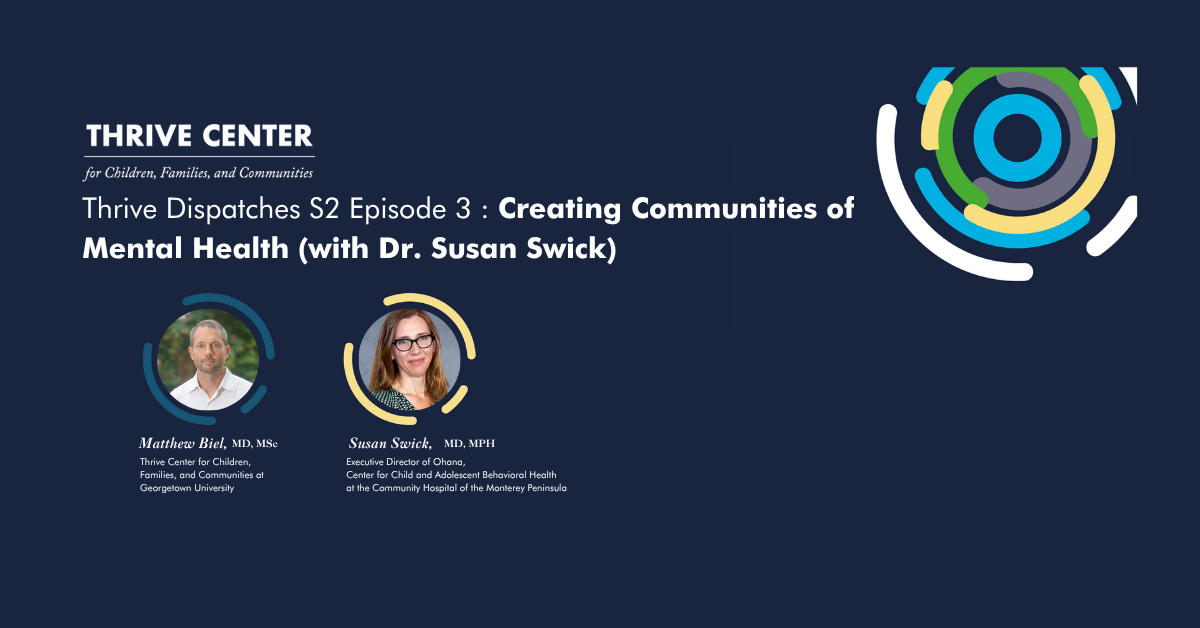In this episode, Dr. Matt Biel speaks with Dr. Susan Swick, Executive Director of the Ohana Center for Child and Adolescent Behavioral Health on California’s Monterey Peninsula. Dr. Swick is building a comprehensive mental health ecosystem for her region.
Rather than simply expanding services that are reactive to crises facing young people, she’s creating a model that integrates promotion of emotional wellbeing, prevention of mental health challenges, treatment for those who are struggling, and engagement with the community. Her approach challenges fundamental assumptions about how we deliver mental healthcare to children, adolescents, and families.
The conversation includes insights about creating spaces that spark curiosity rather than stigma, and outlines a powerful intervention model that brings entire family systems together in moments of crisis.
For questions, comments, or ideas for future episodes, please email us at: thrivecenter@georgetown.edu.
Download Full Transcript
Summary:
In this excerpt, Dr. Swick explains her vision for prevention and community engagement:
This interview has been edited for length and clarity.
Susan: When we got started, I got to talk with them a lot about the idea that we didn’t want it to just look like a hospital, because we wanted a campus that would spark curiosity in the community. If you’re trying to sell prevention, you have to make it a little sticky, right? I suggested to the hospital that we actually know a lot about these common problems. We know how to treat them. We even know in many cases how to cure them if we catch them early and get the diagnosis right, get them to good evidence-based treatment. But the vast majority of our treatments are outpatient treatments…So I tried to move the hospital away from hospital-based care. And so what we really need is to build an outpatient center that has all levels of care because kids are dynamic.
But I said we also wanted to be really careful that we were going to have to find a way to go upstream and not just expand ever more intensive services for kids downstream, and how could we essentially get some fluoride in the water here.
Listen to the full episode
